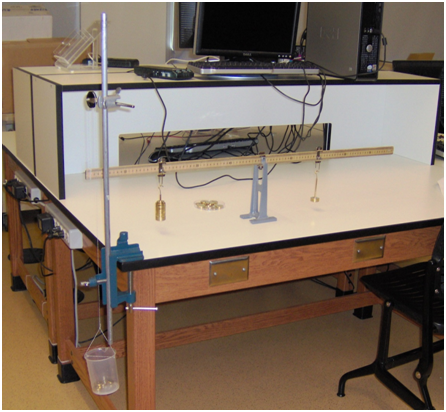
Overall, we were able to understand the concept of torque, even if there were errors in our experiment.An object in rotational equilibrium. Also, there may have been something wrong with the balance and springs because they are very old, rusted equipment and may not work as accurately as they did when they were new. It was difficult to keep the meter bar steady to find where the stick is level. Errors occurred in this lab are due to inaccurate measurements of position. This may be because the presence of error in this lab is high. Therefore, the torque equation may be confirmed in this experiment, but the force equation cannot because the values are too far from zero.


However, the net torque value approaches zero more than the experimental values do. However, experimental results show that the net force is not zero. The experiment should have observed that the net force and net torque acting on the meter stick is equaled to zero. Since the meter stick was level, the angle was 180 degrees meaning the force acted on the axis on either side of the center of balance. In Part III and IV, the forces acting on the meter stick are in the vertical direction. This percent error is low enough to be negligible and to confirm the equation used for Part II. Comparing the actual weight of the meter bar and the experimental values, the percent error was only 5. The weight of the meter bar was found by experimentally calculating the torque. In the study of this lab, torque was observed by measuring, manipulating, and adjusting the weights on the meter bar. However, Torque changes (t=r(F*sin(? )) since angle comes into account. The mass and acceleration due to gravity remains constant. In part IV, if the meter bar were to be held at an incline of 30 degrees angle above the horizontal by the spring balance, the spring balance reading would remain the same because the force of the spring is just m*g, which remains the same even if you change the angle. This would have skewed the results, making inaccurate readings and calculations. Therefore you wouldn’t even find the accurate position where it is level. If the clamp were to have been inverted, where the bar is supported at a point above the center of gravity, you wouldn’t een be able to balance the meter bar because it is not in the center of gravity it would just be slack and hang down. When the center of gravity of the meter bar was determined in Part I, the bar was supported at a point coinciding with the center of gravity. If there are equal numbers of suspension clamps on each side of the support with the same weight, their weights can be omitted from the calculations because the weights can be factored out and be eliminated from the way the force and torque equations are set-up. The motion of the rigid system will move in the same fashion as described above if neither of the conditions for equilibrium are satisfied. If the second condition for equilibrium is not satisfied and there is greater torque of the spring, the system will move in the counter clockwise motion and will move clockwise if the Torque is greater for the meter bar. The opposite will happen if the meter bar and weights have a greater force than the spring. Position on meter stick (cm) r= position from axis of rotation (m) (N*m)96 Questions: The motion of the rigid system will move up in the counter clockwise direction if the condition for equilibrium is not satisfied in which the spring has greater force. Data/Analysis Part I: Prep Part II: Calculating the weight of the meter bar by balancing torque (mb): (mc= mass of clamp, g = acceleration due to gravity) Table 1: Determination of Meter Weight by Balancing to Torque (Experimental) m= mass of weights (g) x= Clamp Position from knife edge (cm) mb= Weight of Meter Bar from Balancing Torque (g) Torque Meter Stick LabĬalculations were than done to verify the sum of the torque was that of the reading on the spring scale as well as that the total sum of the weights was compared via calculation to the upward force shown.

The forced shown by the scale was recorded, the ends were than switched and the force was once again recorded.


 0 kommentar(er)
0 kommentar(er)
